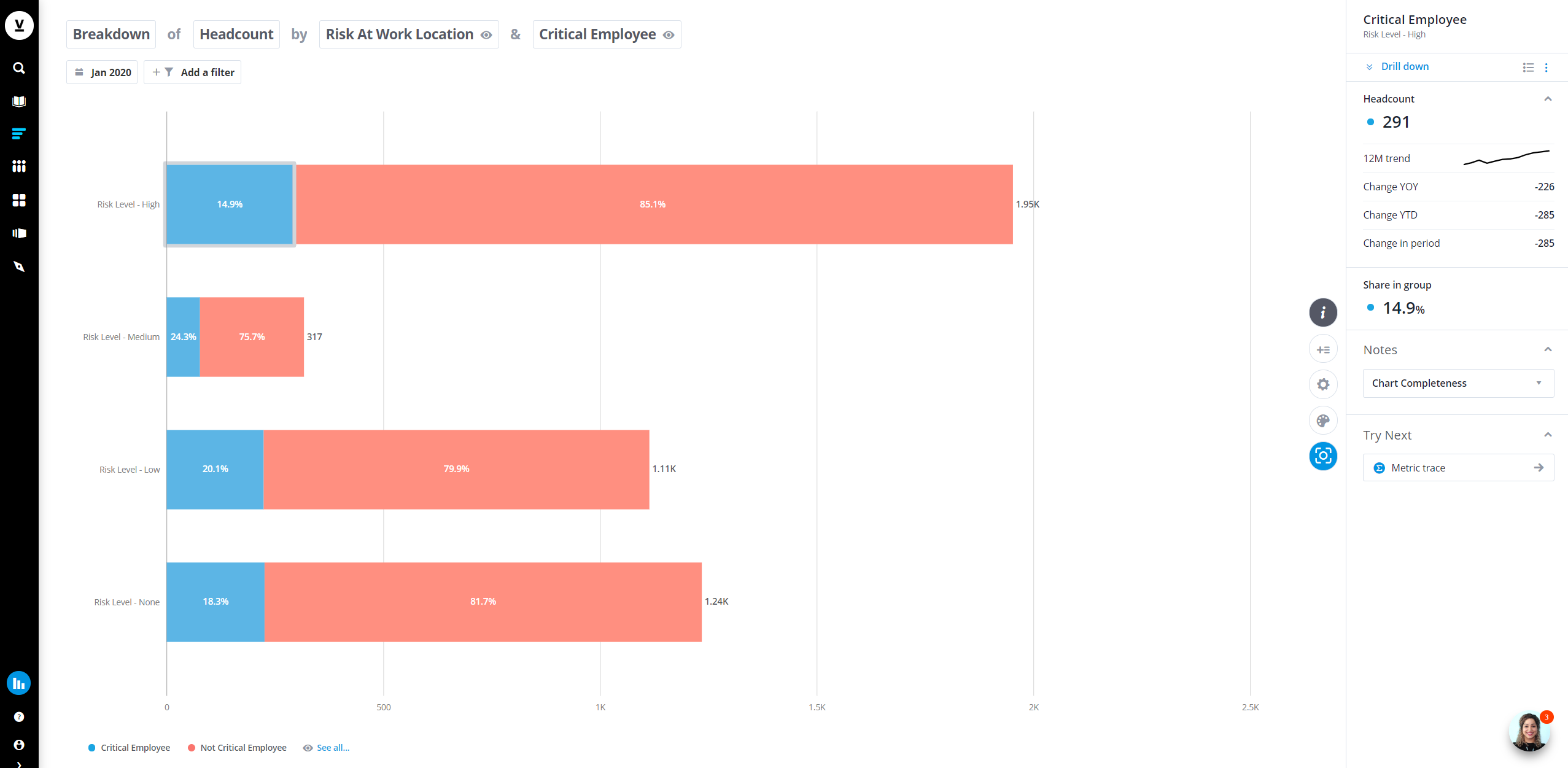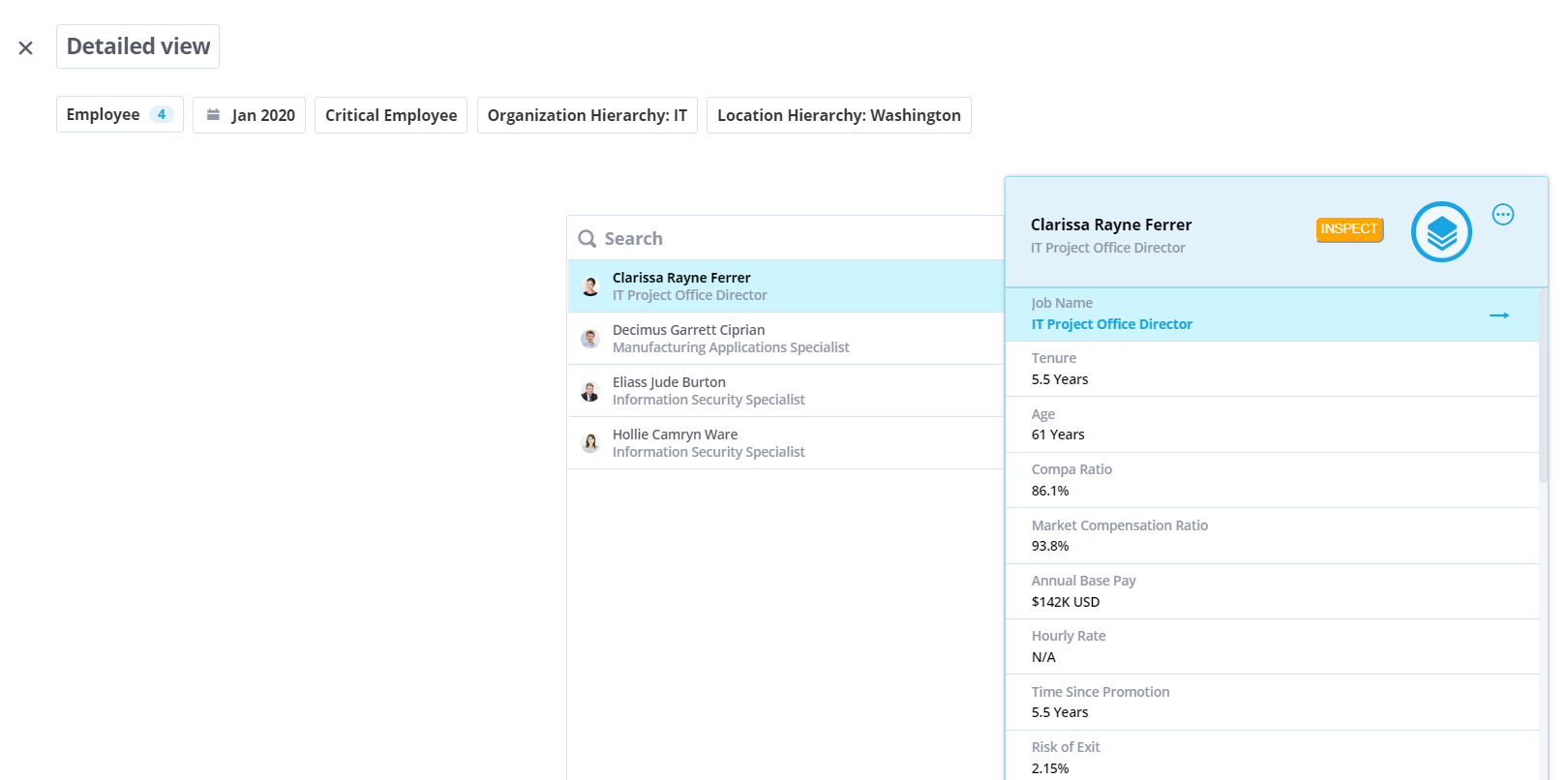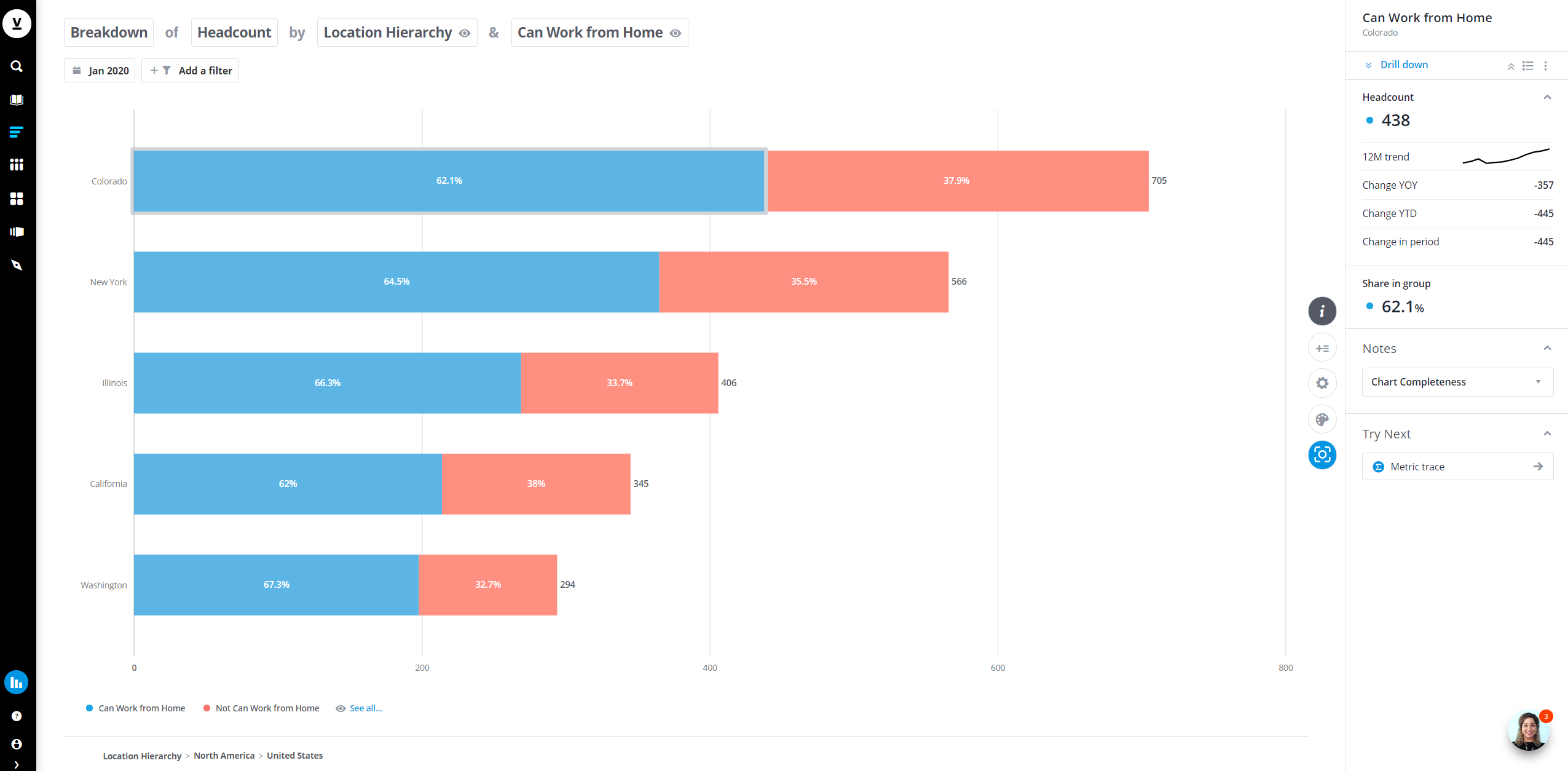5 Critical Workforce Questions to Ask During a Pandemic
As you develop your COVID-19 response plan, here are 5 critical workforce questions that employers must ask.

How do you prepare for the three stages of crisis management? Check out our latest guide, The Lifecycle of a Crisis: How to Navigate a New Reality With the Right Workforce Questions.
Even before the World Health Organization officially declared COVID-19 a pandemic, the business community was ramping up its efforts to help contain the spread of the virus: Twitter, Google, AirBnB, and Microsoft are just a few of the many companies that have asked employees to work from home, and major revenue-generating events have been cancelled.
Here at Visier, we have been tracking the COVID-19 situation and working closely with customers to help them respond. As makers of people analytics solutions, we are focusing on helping customers ask the right questions of their workforce data so that they can develop fact-based emergency response plans.
3 stages of crisis management
React
Respond
Recover
Along with our partners, we are actively working with customers, helping them leverage their people data assets to rapidly respond to the pandemic. Our work is based on the following three stages for crisis management:
Stage 1: React
As soon as a crisis hits, leaders should be reacting immediately to changing developments and tailoring response plans for optimal employee safety. We are currently in this stage of the COVID-19 pandemic.
Stage 2: Respond
In this stage, businesses need to stabilize and engage their employees. They also need to start thinking long-term about what happens once the crisis has passed.
Stage 3: Recover
This stage is about guiding people out of a crisis and longer-term planning. The way in which stage one and two have been navigated will determine success during this final recovery phase.
Update: We’ve created an e-book to help you navigate each stage with the right workforce questions and data analysis. Download it here. You may also find this checklist on Key Questions to Answer During a Crisis handy. Check it out at this link.
While the following information is based on work with our customers, it is valuable for any organization that is developing (or implementing) a COVID-19 response plan. The situation is changing quickly, so organizations need to continuously monitor risk areas and adapt to ensure employee safety and mitigate potential impacts to the business.
5 important workforce questions to ask during a pandemic:
How close are employees to virus hot spots?
How can we best support employees with the highest risk profiles?
Which roles are business-critical?
Who can be productive from home?
How will a travel ban impact our business?
1. How close are employees to virus hot spots?
The first thing to understand is how close your employees are to known virus hot spots. Once you have this information, you can plan how to respond should a work facility and the people within it be placed within a quarantine zone.
You cannot make plans for every facility simultaneously, particularly if your organization has a global presence, so by identifying those locations with the highest risk and business impact, you can build a prioritized list of locations to work through.
In Hubei, China (the epicenter of the outbreak), business production completely halted. Where do you have sites that could be subject to quarantine? How many employees and what work do they do that might be stopped should quarantine conditions be required?
By tracking the daily spread of the virus, you can then determine which locations or facilities will need to be the focus of extra communication or specific responses. If you plan for those facilities with the highest risk first, you maximize your chances of being ready when the first impacts from the virus occur.
2. How can we best support employees with the highest risk profiles?
Certain groups of people are more likely to get very sick from COVID-19. To protect vulnerable people within your employee population, you need to understand the demographic profile of employees by location and work group.
There are many ways to ensure that those with the highest risk profile are supported to keep themselves healthy, including work from home arrangements. However, some types of roles require people to be on site, and there are also things you can do in this challenging situation.
One Visier customer is re-organizing their shift profiles so that the employees with the highest risk of a negative outcome from COVID-19 are placed on shifts in locations with the lowest potential for exposure. This is an example of how combining the risk profile of employees and of the locations they work in an organization can contribute to limiting the harm caused by the virus.
You may not be able to move people around in this way, but it is still important to consider all of the options available for keeping people safe while they work. Ensure that you comply with local labor laws or collective agreements. Emergencies are a time for new solutions–not business as usual thinking.

The visual above demonstrates how locations with high volumes of critical employees can be identified and tracked.
3. Which roles are business-critical?
Certain employees will warrant a distinct and potentially more radical response, such as relocation. To determine whether this action is justified, identify the people without whom the business would stop functioning. How many of these people are located close to “hot spots”? Do you have the opportunity to move them now to less risky locations? It will be too late once they are inside a quarantine zone.
As always, the HR group has to balance the needs of the individual with the needs of the business and through positive communication to deliver the best result possible.
While it may seem like an extreme response, the level of uncertainty around the virus, and our collective ability to control its spread, means that taking the lowest risk option early will give you the best chance of reducing any negative impacts.

The visual above provides a detailed view of all the critical employees who work in the IT function in Seattle.
4. Who can be productive from home?
The best way to stop the spread of the virus is to reduce the contact between people–and when the situation is serious enough, it means encouraging people to work from home. With Italy introducing a blanket quarantine, citizens are required to work remotely when possible.
To build a picture of how work can get done should an area be closed down or suffer high levels of absences due to the virus, identify job families, functions, and worker types where working from home would have a minimal impact on productivity. Once identified, work with the functional leadership and supporting organizations like IT to determine how quickly remote work can be made real.
Also consider how working from home will reduce the demand for hourly workers. Microsoft has done this in Washington State, asking many of their support staff to stay home because there are no employees in their facilities to support. They are also continuing to pay this group of people while they are not at work–an approach that makes sense. You will need all of your best people to get business momentum back once the crisis has passed. How you treat your people now will determine how ready they are to help you get back to full productivity.

The view above shows the percentage of the population in each location that is ready to work remotely.
5. How will a travel ban impact our business?
Another group of employees who should be considered in the immediate wave of emergency planning are the employees who travel as a necessary part of their work. Many sales organizations and customer service roles require people to go to customers’ work sites or even their homes.
The exact response for each of these types of roles will be different. For example, Visier has already implemented an “emergency travel only” policy. This means we expect our sales and customer support teams to engage with people through virtual means and not show up at a client or prospect site unless explicitly invited to do so.
The Resilient Organization: A path forward
Another aspect of COVID-19 is its longer term economic and business impacts. As organizations begin to make critical adjustments and implement response plans, it is inevitable that changes will occur to underlying business models. In industries such as retail, tourism, entertainment, travel, entirely new models and practices will begin to form.
In a future post, we will examine the long-term impacts of the virus, focusing on how skills will need to be updated or sourced differently to match a new reality.
Share your People Data insights #askVisier
Share insights, ask questions, and discover the latest best practices on crisis management and employee safety using people analytics via the #AskVisier LinkedIn community.
Continue learning about crisis management:


